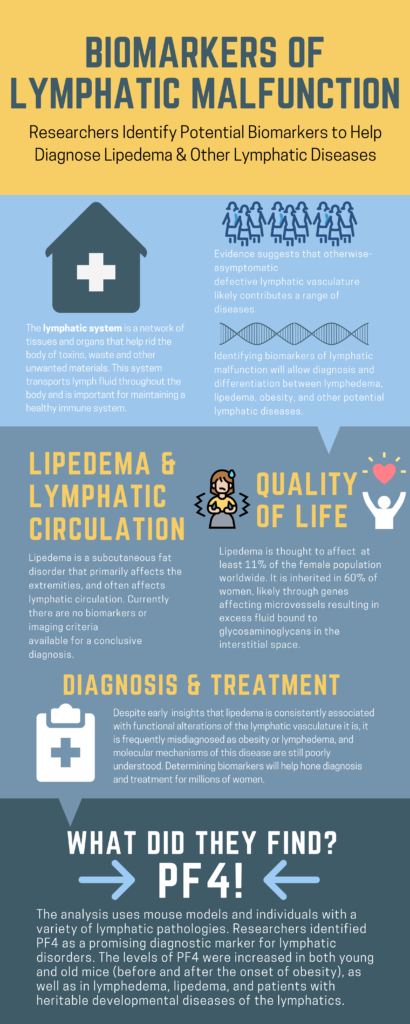

Because lipedema is consistently associated with functional alterations of the lymphatic vasculature, it is frequently misdiagnosed as obesity or lymphedema, and molecular mechanisms of this disease are still poorly understood. Determining biomarkers will help hone diagnosis and treatment for millions of women.
Evidence suggests that otherwise-asymptomatic defective lymphatic vasculature likely contributes to a range of diseases. Identifying biomarkers of lymphatic malfunction will allow diagnosis and differentiation between lymphedema, lipedema, obesity, and other potential lymphatic diseases. The lymphatic system is a network of tissues and organs that help rid the body of toxins, waste, and other unwanted materials. This system transports lymph fluid throughout the body and is important for maintaining a healthy immune system.
The analysis uses mouse models and individuals with a variety of lymphatic pathologies. Researchers identified Platelet Factor 4 (PF4) as a promising diagnostic marker for lymphatic disorders. The levels of PF4 were increased in both young and old mice (before and after the onset of obesity), as well as in lymphedema, lipedema, and patients with heritable developmental diseases of the lymphatics. Interestingly, PF4 has been identified at higher levels in women with Lipedema, even at times when they are not considered overweight or obese. Research suggests that heightened levels of PF4 will continue to aid the research of Lipedema, but just as importantly will provide a means to identify and properly diagnose women with this disease more frequently. One typical and discouraging aspect of living with Lipedema is the difficulty in getting a prior diagnosis, or self-diagnosing and being turned away and dismissed by their doctors. This exciting development should provide the medical community and healthcare providers with genetic evidence to further research on the epidemiology of the disease and further expand diagnosis and treatment.
Read the full article below or online here, and additional information about PF4 and lymphatic-promoted disorders can be found here.
Rockson JCI PF4 lipedema and lymphedema.



